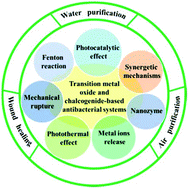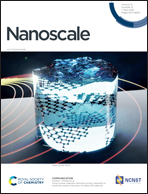Transition metal oxide and chalcogenide-based nanomaterials for antibacterial activities: an overview
Abstract
A new battle line is drawn where antibiotic misuse and mismanagement have made treatment of bacterial infection a thorny issue. It is highly desirable to develop active antibacterial materials for bacterial control and destruction without drug resistance. A large amount of effort has been devoted to transition metal oxide and chalcogenide (TMO&C) nanomaterials as possible candidates owing to their unconventional physiochemical, electronic and optical properties and feasibility of functional architecture assembly. This review expounds multiple TMO&C-based strategies to combat pathogens, opening up new possibilities for the design of simple, yet highly effective systems that are crucial for antimicrobial treatment. A special emphasis is placed on the multiple mechanisms of these nanoagents, including mechanical rupture, photocatalytic/photothermal activity, Fenton-type reaction, nanozyme-assisted effect, released metal ions and the synergistic action of TMO&C in combination with other antibacterial agents. The applications of TMO&C nanomaterials mostly in air/water purification and wound healing along with their bactericidal activities and mechanisms are also described. Finally, the contemporary challenges and trends in the development of TMO&C-based antibacterial strategies are proposed.

- This article is part of the themed collection: Recent Review Articles


 Please wait while we load your content...
Please wait while we load your content...